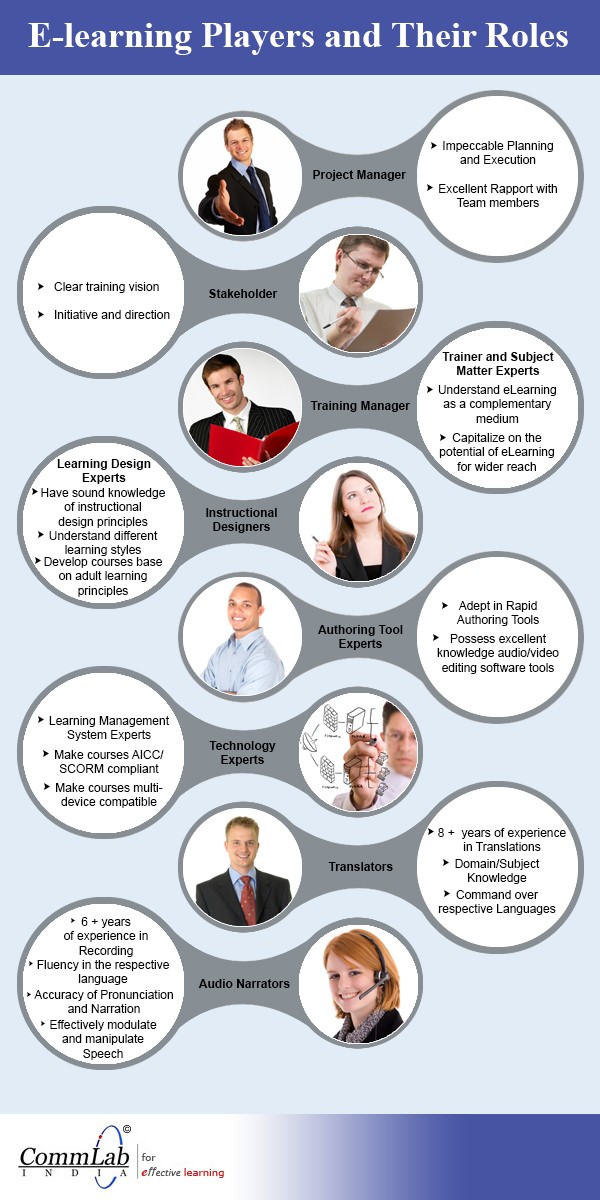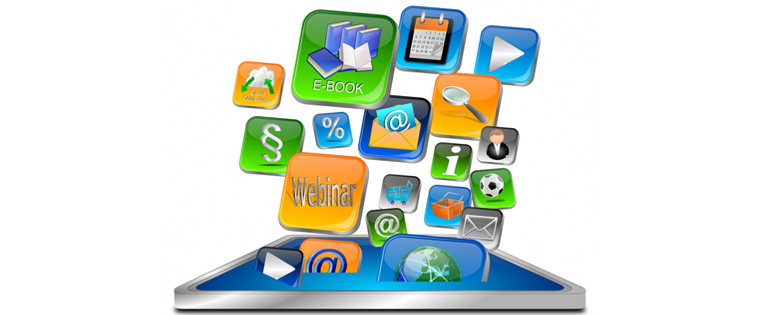What is Needed to Develop an E-learning Course?

Implementing eLearning appears to be a minefield because a lot of investment and time goes into shifting training from the classroom to e-learning. A successful eLearning implementation requires careful consideration of the process you follow, the team you choose, and the technology you use to design, deploy, and deliver courses. Let’s see what it takes to enter the eLearning bandwagon.
1. Have an Efficient Process in Place
The process you follow is very important to ensure that your e-learning project confines to the set timelines and budget. With all the experience we have in developing eLearning projects, we advice the AGILE eLearning development model.
This model ensures there is a close interaction between the stakeholders, subject matter experts (SMEs), instructional designers, and online course developers. There are 3 phases in this model (Source: Leaving ADDIE for SAM by Michael Allen with Richard Sites).
Phase 1: Setting Expectations
In this phase, expectations are set and shared with the customer; the customer is also eduated about the eLearning development process, through frequent interactions.
In this phase, a kickoff meeting is held with all the team members to collect basic information about the project. In this phase, the raw inputs are first analyzed, and a strategy for developing a curriculum is laid.
For example, a list of all the topics covering a particular topic can be grouped as a curriculum. Once the strategy for the curriculum is identified, a global instructional strategy is formulated to be used in all modules. Finally, an authoring tool supports your instructional design strategy should be selected.
Phase 2: Prototyping
In this phase a complete, functional prototype is developed, which is a fair representation of the entire course. This helps us identify the risks, if any, such as mismatch of expectations between the customer and eLearning development team.
A prototype usually comprises 10% of the total slides in the course, is based on the instructional strategy, and developed in the authoring tool finalized in Phase 1.
Phase 3: E-learning Course Launch
In this phase, the team scales up the course design and development process. After the prototype is approved, the design proof (storyboard) of the complete course is developed and sent for approval. Once the design proof is approved, we proceed with the course development.
The first module in this course is developed and sent to the SME for review. After the stakeholder reviews the module, the storyboard of the second module will be developed and sent for approval. This way, all the modules in a curriculum can be developed rapidly, leaving no room for errors.
Take a look at this blog to understand more about the agile process. There is also an interesting infographic summarizing the key points.
2. The Team Required
E-learning development is a multidisciplinary effort and requires the collaboration of different skill sets. There are five major or critical roles in designing and developing any eLearning course. First, you have a project manager who works with the stakeholders and the development team. SMEs are the providers of the content, and they work in close collaboration with instructional designers who define the activities and learning outcomes of an e-Learning course. Then you have multimedia developers who design all the media elements in the course.
You also have audio narrators to narrate the script and translators to translate the English content.
Take a detailed look at the team players in this infographic.
3. The Technology that Supports
E-learning development requires technology and different authoring tools can be used for the purpose. As we discussed earlier, to make courses interactive, we need to follow basic instructional design strategies, and to incorporate such learning design principles, you need to take the help of interactivities, images, videos, audio, and other media elements. Rapid authoring tools make it easy for you to include these elements in your courses, without the need for programming knowledge.
There are several rapid authoring tools in the market, and the choice depends on the training requirements, content delivery mode, and timelines. If you want to develop courses rapidly, you can choose Articulate Storyline or iSpring. If your requirement is to make your courses responsive, you can choose Claro, Adobe Captivate, and Lectora 17. If your requirement is to develop a highly interactive e-Learning course, and want to deploy it only on desktops, then you might consider Adobe Flash.
Once you produce eLearning courses, you need a platform to administer and host these courses. A Learning Management System (LMS) is a platform providing the software solution for the administration of training programs. It could either be open-source or proprietary.
There are many options available for an organization today. Some of the popular open source LMSs available in the market are MOODLE, SAKAI, ATutor, Canvas and many more. Some of the popular proprietary LMSs are Blackboard and SABA Learning Management System. Organizations should consider these options after assessing their training needs, business objectives, and the learning requirements of employees.
This will result in a higher ROI on training and better organizational efficiency. It’s better for organizations to consult eLearning experts who have vast experience in the field, before implementing eLearning.


![E-learning Development - The 3 Phase Agile Process [Infographic] E-learning Development - The 3 Phase Agile Process [Infographic]](https://blog.commlabindia.com/hs-fs/hubfs/Imported_Blog_Media/agile-elearning-development-process-infographic.png?width=670&height=2187&name=agile-elearning-development-process-infographic.png)



![4 Advantages of Implementing Educational Technology [Infographic]](https://blog.commlabindia.com/hubfs/Imported_Blog_Media/advantages-of-implementing-educational-technology-infographic1.jpg)
